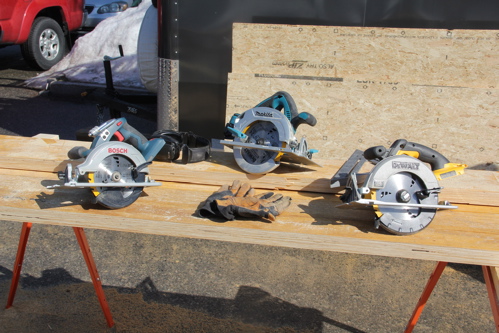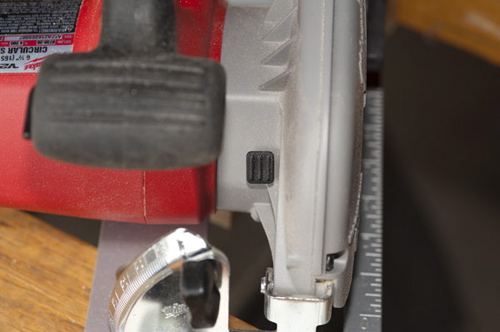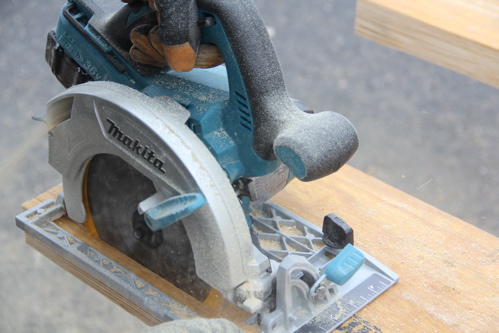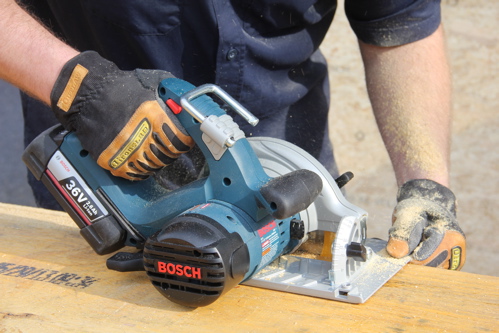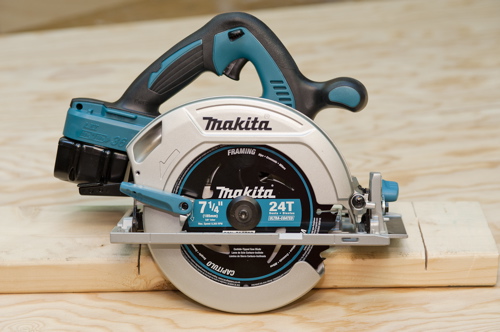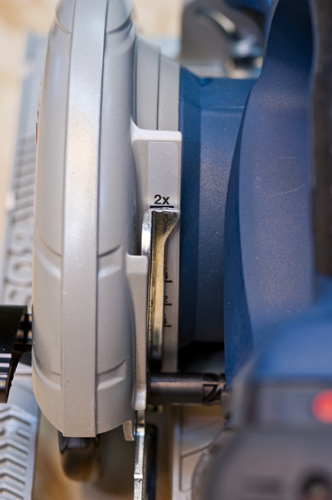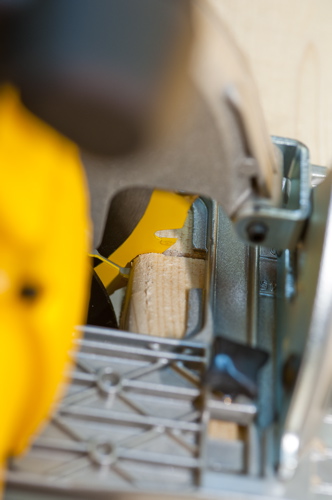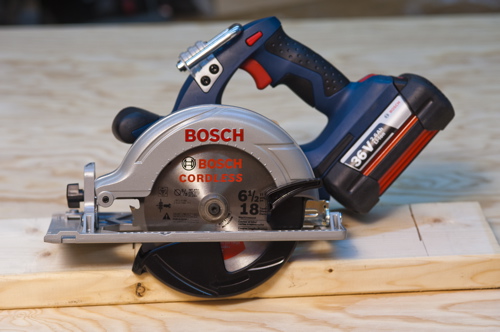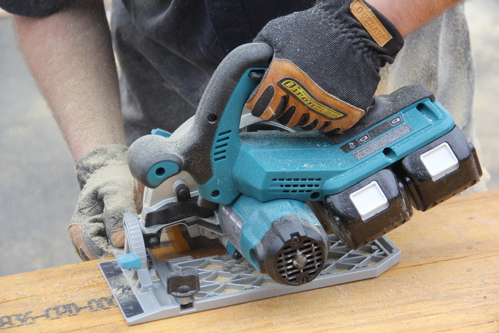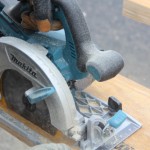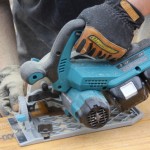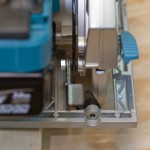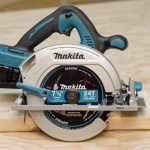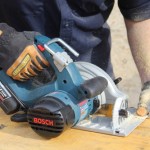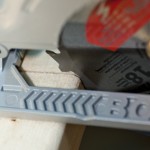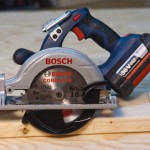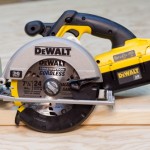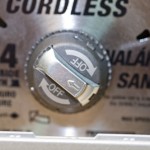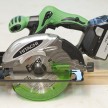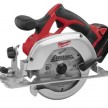36 Volt Cordless Circular Saw Head to Head
36 Volt Cordless Circular Saw Head to Head
On our last Head to Head at A Concord Carpenter we took a look at the major 18-Volt cordless circular saw models on the market to see how they compared. We had a great time evaluating each tool, testing the limits of these cordless saws on some realistic job-site challenges, and torturing them with some stress test scenarios. Check out the 18 Volt Cordless Circular Saw Head to Head here!
Since we enjoyed the testing so much, we did it again! Just with more Volts with this 36 Volt Cordless Circular Saw Head to Head.

With the functionality, convenience, and independence of a cordless 18 Volt saw we wanted to explore what a higher voltage model could bring to the table. Given our experience with the 18 Volt models we knew we could give the 18+ voltage saws a thorough job-site examination.
Again with hours on these blades and the ACC crew’s analysis of each saw’s features and performance we are now providing readers with a comprehensive look at some leading companies 28 and 36 Volt circular saw models. The advantages of a cordless circular saw is only really limited by battery life and power, both of these issues are addressed with the added juice and longevity of a beefier battery. In this head to head we run the gamut of batteries, a 28 Volt from Milwaukee, straight 36 Volt models from DeWalt and Bosch, and a double 18 Volt battery platform 36 Volt saw from Makita. Let’s see the line up in detail.
Models Featured in The Test:
Bosch 1671K-RT 36V 6-1/2″ Cordless Circular Saw
DEWALT DC300K 36V 7-1/4″ Cordless Circular Saw
Makita XSH01X 36V (18V X2) 7-1/4″ Cordless Circular Saw
Milwaukee 0730-22 V28 6-1/2″ Cordless Circular Saw [Not shown above]
For this test we focused on the power of these saws to perform up to the standards of a corded saw, so we put them up against LVL stock in a rip cut endurance test. We evened the playing field by standardizing the blades on each saw using an industry standard DEWALT framing blade, freshly charged the batteries, and used one operator during the test to try control as many variables as we could. Let’s see how the competition faired in our focused categories; blade change, ergonomics, adjustments & settings, sight line, endurance, and our overall pick for best in class. Starting with blade change.
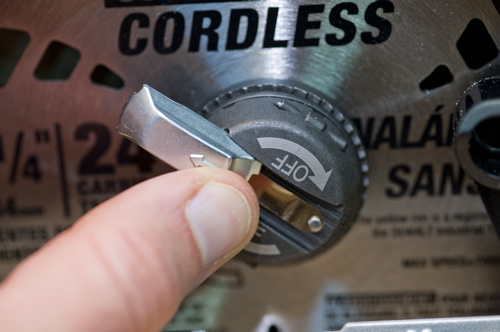
Blade Change Winner – DEWALT
Blade change is the most basic and most frequent type of maintenance you’ll perform on your circular saw so quick, efficient, and simple blade change is a time and money saver, particularly important for professional users. In this category we found the DEWALT DC300K 36V 7-1/4″ Cordless Circular Saw to be best in class.
DEWALT really steals the show in this category with an innovative tool-less quick release blade change. Which means a simplified blade change process with less steps, less parts, and no searching for wrench. Additionally, the blade lock is quick to catch, although located centrally on saw, which is not as ergonomic for blade change. Not sure why this feature didn’t catch on for DEWALT, perhaps it was too innovative for the old school crowd? Too expensive to justify? Couldn’t hold up to job-site abuse? Regardless our crew here was VERY impressed with the technology.
A notable model in this category is the Milwaukee M28 0730-22, which was designed with an open concept for blade change, features secure on board storage for the Allen wrench, and the blade lock button is easy to get to for an overall great blade change! Milwaukee does a great job emphasizing important features in their designs, but in this category, especially something as standard as blade change, innovation takes the prize.
Ergonomics Winner – Makita
The “feel” of saw can be subjective based on the preference from user to user, but with all the cordless saws we’ve been comparing lately we feel comfortable that we here at A Concord Carpenter can give you an objective assessment of the best in class in this category.
Additionally, we didn’t just consider the primary handle as the only judgement of ergonomic superiority on these circular saws, we also took into account the auxiliary handle, adjustments knobs, levers, and handles, and of course how ALL these contributed factors contributed to ergonomics.
We named the Makita XSH01X best in class for designing the primary handle to have very comfortable feel with an angle that strikes a nice balance between the aggressive parallel handle of DEWALT’s DC300K and the upright Bosch 1671K-RT handle. Bottom-line Makita did a great job finding a handle geometry that is comfortable for a lot of users.
Additionally, the auxiliary handle is petite enough to easily reach and effectively hold the blade guard back for angled cuts. Finally, the quality of the design shines through in this category as most knobs and adjustments are over-sized and covered in soft over-molded rubber to increase access and grip.
The Bosch 1671K-RT, as we noted above, features a upright handle geometry that most of our crew recognized as the most comfortable position for waist high rips. The upright handle begins to feel uncomfortable in non-traditional applications of a circular saw, like cutting on the vertical, or cutting on the ground. Still the overall design of the saw is great, making it a stand out in this category.
Conversely the DEWALT DC300K features an aggressive in line handle that makes cutting on the ground super comfortable. This design caters to the carpenter who often performs their work in place and doesn’t establish a work station. I often find detail framing requires you to bounce from location to location and efficiency is lost if you walk to and from a workstation for cuts. Overall DEWALT’s ergonomics are top notch, but this model is a bit older and doesn’t reflect the most recent innovations.
Adjustments and Settings Winner – Makita
Adjustments and Settings may be something you only consider after power, endurance, and durability when it comes to choosing a circular saw, but don’t overlook the time and energy saved when you can make adjustments to your saw quickly. Not to mention the increased accuracy and safety you gain with an appropriately adjusted saw. We choose the Makita XSH01X as our best in class for it’s attention to detail on knobs and markers, while maintaining a focus on common tasks, rather than overloading the tool with bells, whistles, gauges, and fluff features.
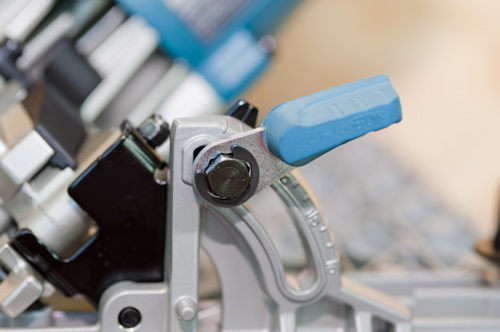 Bevel Settings Winner – Makita
Bevel Settings Winner – Makita
The Makita’s bevel settings hit the mark with functionality, convenience, and ease of use. The bevel setting was very easy to operate, smooth, but not too lose or over tense. This saw feature an industry standard 0-50 degree adjustment, but shines with an override lever to go past 45, which means the saw has a positive stop on 45 degrees, for your most common bevel cuts.
DEWALT’s DC300K features Positive stops at 22.5 and 45, while the gauge is well marked for added resolution for atypical angles. Making it a stand out in this category, but the saw does has a super loose lever lock for the bevel adjustment when “de-tensed” which makes the accuracy of the stops questionable and to zero out after adjustments you must pinch the shoe to motor otherwise your blade remains slightly beveled which can trip users up when returning to square cuts.
Depth Settings – Four Way Tie
No clear winner in this category, all saws had comparable performance, some unique features, but nothing effective and impressive enough to take the overall category. Personally, I’m a fan of simple gauges for framing applications, as the market is SO competitive, any time saver is appreciated.
So I really liked the simplicity of the Bosch 1671K-RT’s depth gauge featuring dimensional lumber settings for quick adjustments to effectively cut two-by material and material depths like 1/2 and 3/4″, perfect for plywood. As a framing tool this saw’s depth gauge is perfect!
But this isn’t a show stopper and is a feature you can find on serious framing saws like the corded SKIL 7-1/4 Inch MAG77LT Worm Drive Saw, which Rob reviewed on Tool Box Buzz. And as you’ll find out from his review, he’s not a fan of the scale, so again this isn’t a category winning feature, but I felt it was worth mentioning since we also didn’t note the same feature on Bosch’s 18 Volt model in our 18 Volt Cordless Circular Saw Head to Head.
Sight Line Winner – DEWALT
When making money cuts with a circular saw you want to be able to sight the blade from both sides to ensure that, regardless of angle, direction, or orientation you can keep the blade line for that perfect cut. In this category DEWALT easily out performed the competition.
It’s no surprise the DEWALT DC300K takes this category for sighting AGAIN as DEWALT saws are the leaders in this open design to ensure the operator can effectively see their cut from either side of the blade. This feature makes accuracy during complicated cuts easy to achieve and lining up/starting your cuts right the first attempt almost a guarantee.
The Bosch 1671K-RT’s outside sight line it great and very wide open. The inside sight line is okay, primarily obstructed by the auxiliary handle, but based on the competition this is second best in class. The Makita XSH01X and Milwaukee M28 0730-22 have good outside sight lines, but marginal inside sight lines due to obstructions like the motor or blade guard respectively.
Endurance Winner – Bosch
When it comes to specifications, features, adjustments, or innovations of a tool, at the end of the day what matters most is that tool’s ability to perform it’s primary task. So for circular saws, run time during heavy duty applications is a major discriminator for best overall saw.
We punished these saws by cutting through 1-3/4″ Laminated Veneer Lumber, better known as LVL and even better known for being super hard, super dense, and super difficult to cut. Based on our 18 Volt Head to Head results were not that surprised, as Bosch once again dominated the competition in the endurance test.
Bosch took the category handily with their 1671K-RT ripping through 78-feet of LVL with speed and power. The Makita XSH01X came in second by a wide margin by cutting 51-feet of Laminated Veneer Lumber. Milwaukee and DEWALT rounded out the competition with 42 and 30-feet respectively.
The overall results are displayed in the bar graph below:

Overall Winner – Makita
The 36 Volt market hasn’t been a priority for many of the big names in tools. But Makita, taking advantage of its behemoth 18 Volt line featuring a wide range of 18 AND 36 Volt tools that combine two 18 Volt batteries to expand the capabilities of their tools, has hit the mark with a well designed and powerful circular saw.
Makita allows their 18 Volt users to use their existing batteries to expand into a cordless circular saw that can replace their corded saw for almost all framing applications. Additionally the saw runs standard 7-1/4″ blades so no need to find or special order 6-1/2″ blades from your local lumber yard.
Overall Makita’s XSH01X 36V (18V X2) 7-1/4″ Cordless Circular Saw combines a super functional saw with great settings, adjustments, and feels great in the users hand. This 18/36 Volt hybrid vastly exceeds the performance of 18 Volt models and goes toe to toe with corded saws without the cord!
Bosch once again dominated our endurance test showcasing it’s superior battery run-time on its 1671K-RT saw and DEWALT continued to highlight its best in class sight lines and innovative features, like the tool less blade change with the DC300K. But overall these 36 Volt models despite offering superior power compared to their 18 Volt counterparts don’t exhibit the emphasis on design and functionality of the Makita.



